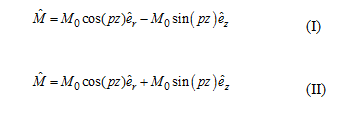| Home | About | Brochure | Committee | Experts | Venue | Programme | Accommodation |
| List of Problems (2014) |
| Problem 5 : Green Propulsion Regenerative Electromagnetic Suspension System (GPRESS) |
PROBLEMS DESCRIPTION Suspension systems provide a dual purpose which is contributing to the car's handling and braking, and keeping vehicle occupants comfortable and reasonably well isolated from road noise, bumps, and vibrations. The current vehicles are using a passive suspension system that incorporates with hydraulic damper and mechanical spring. The conventional system is not assuring can improve the vehicle handling and passenger safety especially when the transportation research board had reported that 51 % of the serious car accidents are caused by rollover. The perfect automotive suspension system can absorb road shocks rapidly and could return to its normal position slowly while maintaining optimal tire to road contact. However, this is difficult to realize by passive suspension system, where a soft spring allows for too much movement and a hard spring causes passenger discomfort due to road irregularities. Hence, the new approach is increasingly developed to influence the dynamic performance of the vehicle. A new method and product has been introducing to the automotive industry to overcome this problem. Basically in order to model and investigate the dynamic behavior of the suspension system, a full car model is preferred (Kruczek & Stribrsky, 2004). However roll and pitch behavior can also be modeled as an equivalent force disturbance acting on the body mass. Hence, this paper is concentrated on a quarter car model as shown in Figure 1. Conventionally the passive suspension is installed on the current vehicle. It is shown in the Figure 1 (a) where the quarter car model for this passive suspension system that consists of one-fourth of the body mass, suspension components and one wheel are represented. Meanwhile, the quarter car model for active suspension system, where the linear permanent magnet actuator is installed in parallel with the spring, Figure 1 (b). |
 Figure 1. Passive and active quarter car model | |
|
The assumptions of a quarter car modeling are as follows: the tyre is modeled as a linear spring without damping, there is no rotational motion in car body, the behavior of spring and damper are linear, the tyre is always in contact with the road surface, and effect of friction is neglected so that the residual structural damping is not considered into vehicle modeling. A 9-slot, 10-pole quasi-Halbach magnetized tubular machine with modular winding, Figure 2, has been developed for active suspension. Each pole of the magnetic armature comprises of one radially and one axially magnetized ring magnet. The salient feature of the quasi-Halbach magnetization is that the axially magnetized magnets essentially provide a return path for the radial air-gap flux, and hence, the flux in the inner bore is relatively small. As a result, the use of a very thin ferromagnetic tube or even a nonmagnetic tube on which to mount the magnets will not significantly compromise the thrust force capability. This is conducive to reducing un-sprung mass and hence enhancing the dynamic capability of active suspension. | |
 Figure 2: Schematic of 9-slot, 10-active pole tubular PM machine with quasi-Halbach magnetization | |
|
PROBLEM STATEMENT | |
 Figure 3: New design of GPRESS | |
|
| |
 | |
|
| |
 | |
